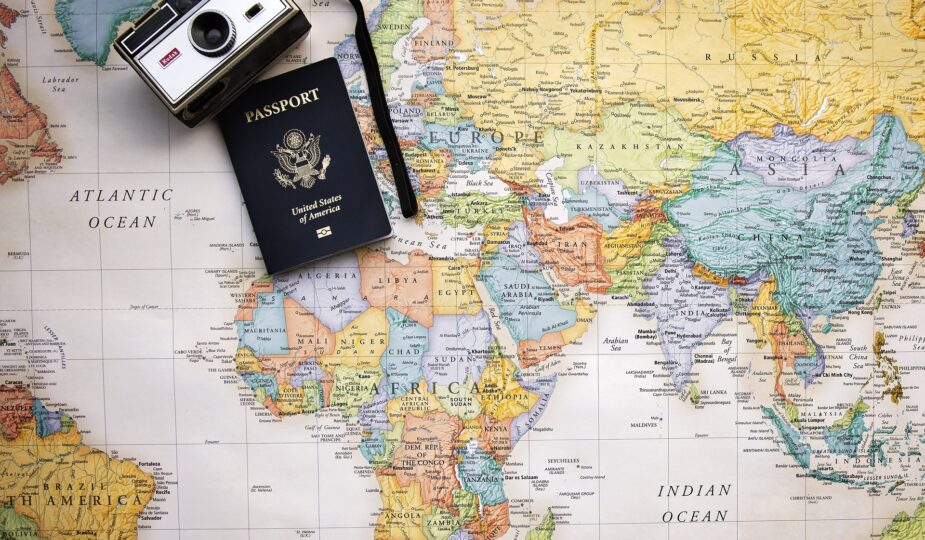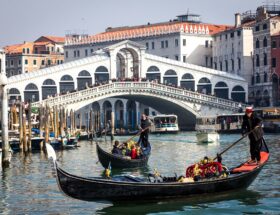For many, planning the trip is as exciting as taking the trip itself. For others it fills them with dread. I don’t know where to start, I don’t have the time and if it’s not incredible the blame sits with me!
We come across different types of planners on our journeys. Some travelers like to fly by the seat of their pants – ‘spontaneity’ is the keyword here which means taking each day as it comes, these are the minimalistic planners. They either do very little on vacation or embrace the ample opportunities to experience unplanned adventure.
Then there are the control freak planners, where they live by a detailed itinerary that facilitates them squeezing every last drop out of every minute of every day on their vacation.
Somewhere in between are the Inbetweeners – often times they only got around to the planning the first few days and then lost impetus, or they planned one activity every two to three days, not sure how much they could get their families to commit to or whether they could even get them up in time for an activity.
We are used to dealing with all sorts of planners and so to assist here are our simple steps to planning your trip or vacation:
Step 1: Location, location, location – chose your destination
Where are you going? For many this is pretty straight forward, its the next destination on the bucket list or the kids are doing a project at school on the Romans or are starting to become proficient in French and so Paris beckons. For others its a complete unknown. They are not sure of the best time to travel to a destination, what to expect and what season it is there (I’m not joking! We’ve had clients suggesting a beach holiday in June in Australia, not realizing its in the middle of winter there!). For those not sure its probably beneficial to spent some time with an expert that can brainstorm some ideas and come up with a plan
Step 2: Decide on the length of your trip
For some families they have a pre-determined vacation length and so this is quite an easy question to answer. For others it is about understanding how long you should spend in a particular destination e.g. 10 days in Rome is not practical unless you are planning on assisting in an excavation or helping fixing the roads! Once the destinations and time-frame have been determined the fun can begin.
Step 3: What do you want to get out of the trip?
Now is a good time to reflect on what you want to achieve on this trip, its no different to many other things you do in your life – what is the plan? What should each day look like? Is it an immersive experience, living like a local? Is it filled with visits to the arts and cultural centers of a city? Or is it just sitting back and soaking in the best food, wine, gelato that a place has to offer? This may make you realize that you need to rethink the length of your trip or a rework of your budget.
Step 4: What is your budget?
In order to plan effectively this is a question that needs to be answered early on. It is amazing how many travelers tell us ‘we don’t really have a budget’ and within seconds of presenting a possible quotation figure we hear ‘I didn’t really want to spend that much!’ …so you do have a budget?
There is no right or wrong answer here because you can plan for any budget, whether it is backpacking and staying in hostels to 5 star luxury. Your style of accommodation as well as the number and type of activities you want to partake in will determine the final figure. If your budget is not being met then you might contemplate changing the style of accommodation from luxury to upscale or doing less or less expensive activities. The opposite is also true, of course.
Step 4: Is your house in order?
Now is a good time to check whether your passports have expired or not and whether there is enough validity on them should the unexpected happen and your find yourself staying longer than planned. Other questions such as – do I need a visa? Do I need any sort of immunization/vaccination? Does my planned destination require an international drivers licences? And while you are at it – what currency requirements are there? Will my cellphone work and what will data usage cost me?
Step 5: Book your flights
Normally to get the best deals you should book a flight well in advance. However, some believe that if you leave it to the very last minute better deals can be found. In our experience its not worth taking the chance especially the larger the family is. This is ok if you are traveling alone but more risky the more people are involved.
Step 5: Buy your Travel Insurance
Once the first part of your investment has been made it is important that you put a policy in place to protect this. Things happen and they can happen today or tomorrow leaving you short and unprotected.
It’s not just lost luggage or medical protection that insurance covers. Are you willing to take the chance of losing out on your investment if a family member pulls out; if you get stuck in a foreign country; if you have to come home early for an emergency or (at time of writing) while planning your trip you realize that you can’t take it due to the corona virus lockdown and travel restrictions?
If you can’t afford the loss buy travel insurance! We’ll talk about the best policy to buy later.
Step 6: Book your Accommodation
It is not imperative that you book flights before your accommodation, booking accommodation first and then your flights also works. But once the one is booked then in your mind you are set and the next one falls quickly into place. It is generally easier to change a hotel booking though than a flight.
Booking accommodation as quickly as possible is highly recommended. Waiting for last minute deals leads to a very stressful planning process, believe me! Availability is very dynamic and certain destinations fill up very quickly (Amalfi coast in Italy springs to mind – small town with millions of vistors per year and very few hotels), so the sooner you can get a reservation the better.
Decide on the style of accommodation (upscale or luxury); room configuration (family room or adjoining); location (central or out of town); amenities (swimming pool, spa, gym) – these will impact on the budget. Re-look at the budget.
Step 7: Plan you Activities, Tours and Excursions
Now that your accommodation is booked the fun begins! Once you know for sure where you are staying you can plan what you are doing in and around this location. Decisions need to be made on must do’s and nice-to-haves. We like to break this category down into Activities, Tours and Excursions as each are different in their composition and cost.
For some a larger investment is made on activities and less on accommodation. If you are out all day on excursions is the luxury accommodation a waste of money?
We recommend that when you get to a new destination that you spend some time with a local and learn a little about the location, what there is to do and the people. An orientation tour elevated the whole experience and if this tour can be converted to encompass food or drink, even better!
Ber in mind that shared tours are often a lot cheaper than private, so the decision on which to choose will depend on your budget, whether you want a shared experience and shared experience are less flexible than private where the guide is basically there for you. Shared experiences can be hard if your kids are needy, ask too many questions, get bored easily and remember the same is true if you get stuck for all day with a family where the kids have these symptoms and yours don’t!
Step 8: Plan the Logistics
This often gets overlooked as a planning step but it is really important. Getting from A to B as stress-less as possible makes for a great vacation. There is no sense in spending bucket loads of money on the best hotels and excursions and then train trips that entail two to three changes in the heat on a crowded train before you reach your destination.
I would always recommend that you arrange a transfer to and from the airport on arrival and departure, you want to start and end your vacation on a high, not stressed. Your activities should include a pickup or arrange a transfer to the starting point, relying on availability of taxis is not always wise and getting lost and being late for a tour is not ideal.
Getting from city to city is best done by train, preferably first class. Or if you don’t mind driving and are less worried about your carbon footprint then renting a car can give you the most flexibility and a perfect opportunity to explore places off the beaten track.
As a last resort I would suggest bus rides – these are for the most adventurous, those who have more time on their hands and who want a super immersive expereince.
Step 9 : Let your Bank know
The last thing you want is to arrive abroad with no access to cash. Transactions that are not typical will normally be flagged as being fraudulent. A simple phone call before you leave can remedy this.
Two other tips – arrange foreign exchange before you leave, enough for the first few days and pair down when you are out and about – keep another credit card in a separate pocket as a backup. If your wallet gets stolen you don’t want to be left high and dry.
Step 10: Enjoy!
Do we really need to tell you how?!



